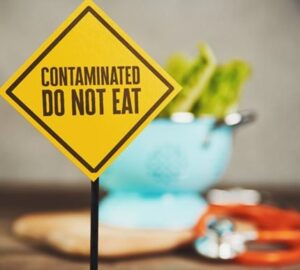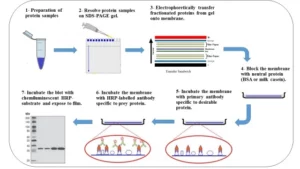Red algae are members of the phylum Rhodophyta, a rich and diverse collection of photosynthetic eukaryotic life forms predominantly seen in aquatic systems.
They bear the red coloration because of the occurrence of phycoerythrin which is a light-collecting pigment that enables them to exist deeper in water through the absorption of green and blue colors. They are among the earliest eukaryotic algae and have over 1.2 billion-year-old fossil records. Red algae are an important part of marine ecosystems, especially in reef formation and primary production.


Red Algae (Rhodophyta) Characteristics
Morphological Features- Red algae may be unicellular, filamentous, or multicellular. They do not have flagella or centrioles at any stage of life, which makes them different from most other algal groups. The thallus (body structure) ranges from simple filaments to complex branched multicellular forms.
Pigmentation– They have chlorophyll a, but the green color is hidden by accessory pigments like phycoerythrin (red pigment), phycocyanin (blue pigment), and allophycocyanin. These pigments enable red algae to carry out photosynthesis even in deep-sea waters, up to 200 meters below the surface.
Cell Structure- Red algae do not possess flagella at any stage of the life cycle. They possess single or many chloroplasts, thought to arise from primary endosymbiosis. Cell walls consist of cellulose and sulfated polysaccharides like agar and carrageenan, which impart rigidity and elasticity.
Storage Product– They store carbohydrates as floridean starch, which has a different structure from plant starch.
Habitat– Red algae are mostly found in marine habitats but also exist in freshwater and land habitats. Are mostly found in warm, tropical waters, but some are adapted to cold, polar habitats.
Classification of Red Algae (Rhodophyta)
Red algae mainly belong to two classes:
Class Bangiophyceae
This class represents simpler red algae having filamentous or sheet-like forms. Cells are predominantly uni-nucleate. They are commonly occurring in intertidal areas, subject to varying water levels. Example: Porphyra (traditionally employed to produce nori, the seaweed used in sushi).
Class Florideophyceae
They are multicellular, more complex, and branching than Bangiophyceae. Cells are typically multinucleate, and more developed reproductive features are present. They comprise species responsible for forming coral reefs and industrially produced agar and carrageenan.
Examples: Corallina – A calcareous-secreting alga involved in reef-building. Gelidium – Applied in agar production for food and microbiological purposes. Chondrus crispus – Source of carrageenan, which is commonly applied in food and cosmetic industries.
Habitat of Red Algae (Rhodophyta)
Marine habitat and distribution
About 6,000 species of Red algae (phylum Rhodophyta) are found in marine habitats. They are most frequently encountered in tropical and warm temperate coastal areas but also occur in cold oceans. Red algae can live from the intertidal zone to deep ocean depths, in some instances reaching more than 200 meters.
Substrate attachment
Red algae are mostly attached to hard substrata like rocks, shells, and pieces of coral rubble. Some species grow epiphytically on other marine algae or marine plants. Some are endophytic, being within the host organisms’ tissues, or epizoic, growing on animal surfaces. While mainly marine, some genera, for instance, Batrachospermum and Compsopogon, occur in freshwater, normally in clear, cool, and shaded streams.
Ecological Significance of Red Algae (Rhodophyta)
Ecologically, red algae are primary producers in the marine environment, storing solar energy in the form of chemical energy through photosynthesis. They constitute an important component of the marine food web, particularly for herbivorous invertebrates and fish. Furthermore, coralline red algae including Corallina and Lithothamnion, precipitate calcium carbonate in their cell walls, contributing to coral reef formation and stability. The calcified structures decrease wave energy and erosion and support biodiversity by providing habitat structure.
In addition, thick algal mats provide protection and breeding sites for numerous marine organisms, including juvenile fishes, mollusks, and crustaceans. Red algae also form symbiotic associations with cyanobacteria and sponges and are regarded as significant bio-indicators since they react sensitively to changes in the environment, for example, nutrient status and pollution.
Morphology of Red Algae (Rhodophyta)
- Red algae exhibit a vast array of morphological forms, ranging from the simple unicellular body to highly complex multicellular thalli.
- Unicellular types are exceptional and are predominantly represented by the genus Porphyridium.
- Filamentous types, for example, Batrachospermum, are long filaments of cells and are typical in freshwater environments.
- More complex red algae possess flattened or cylindrical parenchymatous thalli, either branched or unbranched.
- Genera such as Chondrus, Gracilaria, and Gelidium exhibit significant tissue differentiation.
- Some species, especially coralline algae, develop heavily calcified thalli. These calcareous red algae are rigid and contribute significantly to reef-building and marine sediment formation.
Cellular Structure
Red algae cells are eukaryotic and carry chloroplasts with chlorophyll a as the primary pigment, and accessory pigments called phycobiliproteins, including phycoerythrin and phycocyanin, that are responsible for their characteristic red color. They are one of the few types of algae to have no centrioles or flagella present in any of their life-cycle stages.
One of the distinguishing characteristics of red algae is the existence of pit connections or pit plugs between cells in immediate contact. The structures are created by cell division and facilitate minimal communication and nutrient transfer, which plays a role in tissue cohesion.
Cell Wall
The red algal cell wall has an inner layer of cellulose and an outer mucilaginous layer of complex polysaccharides. Two economically important substances-agar and carrageenan are produced from this mucilage. They assist in moisture retention and act as a shield against desiccation and predation. Moreover, in certain species, the addition of calcium carbonate makes the thallus more robust and gives it structural support in energetic marine habitats.
Reproduction in Red Algae (Rhodophyta)
Red algae reproduce both sexually and asexually, varying from species to species. One of the characteristics of red algae is that, unlike most other algal groups, they do not have motile reproductive cells at any stage of their life cycle. This is an evolutionary characteristic of great importance.
Asexual Reproduction- Asexual reproduction in red algae is found to be general and occurs by spores or vegetative fragmentation. In simpler filamentous species, like Batrachospermum, thallus fragmentation is a common method of propagation. More advanced red algae, particularly marine forms, are asexually reproduced by the formation of monospores or tetraspores.
Monospores are non-motile, unicellular spores produced in monosporangia.
Monospores are water-dispersed and can germinate directly into new thalli without fertilization. In triphasic life-cycle species, the tetrasporophyte generation is involved in asexual reproduction, which experiences meiosis to yield tetraspores.
These haploid tetraspores eventually develop into the gametophyte generation, thereby perpetuating the life cycle without sexual union.
Sexual Reproduction in Red Algae (Rhodophyta)
Sexual reproduction in red algae is invariably oogamous, or the union of a large non-motile female gamete with a smaller non-motile male gamete. Unlike most of the other algae, the male or the female gametes in Rhodophyta do not bear flagella.
Spermatia– The male gametes are referred to as spermatia, and they are formed in specialized organs called spermatangia. Spermatia are transported by water currents to the female reproductive organ because they do not have flagella and hence cannot swim on their own.
Carpogonia– The female gamete is contained in a structure termed the carpogonium, which often contains an elongated hair-like projection called the trichogyne. The trichogyne is an accepting structure that traps the spermatium. When the spermatium unites with the carpogonium through the trichogyne, fertilization is achieved and the diploid zygote is established.
In contrast to most plants and algae where the zygote grows into a free-living organism, in red algae, the zygote forms a carposporophyte, which is still attached to the female gametophyte.
Alternation of Generation in Red Algae (Rhodophyta)
Most red algae exhibit a triphasic alternation of generations, with three separate phases: the gametophyte, carposporophyte, and tetrasporophyte. This triphasic generation is one of the most intricate in algae and indicates the evolutionary progress of Rhodophyta.
Gametophyte– The haploid phase of the life cycle of red algae is the gametophyte. It is generally a free-living, photosynthetic organism. The male and female gametophytes bear spermatia and carpogonia, respectively. Following fertilization, the zygote does not develop into an independent sporophyte but stays attached to the female gametophyte and matures to the next stage.
Carposporophyte– The second, diploid phase is the carposporophyte. It develops from the zygote and grows as a small parasitic structure on the female gametophyte. It is not capable of photosynthesis and receives nutrients from the gametophyte. The carposporophyte develops through mitotic divisions to form diploid carpospores.
Tetrasporophyte– The tetrasporophyte is also a diploid phase but is distinct from the carposporophyte since it is a free, photosynthetic thallus. It arises from a diploid carpospore and is superficially similar to the gametophyte in morphology in most species. The tetrasporophyte releases spores after meiosis in specialized cells known as tetrasporangia, yielding four haploid tetraspores. These tetraspores germinate to produce new male and female gametophytes, thus completing the life cycle.
The triphasic life cycle represents an adaptation through evolution to advance the survival and reproductive advantage of red algae. Two diploid stages (carposporophyte and tetrasporophyte) make the genetic diversity increase and multiply for spore dissemination. It serves the best within marine life, where the gametes would depend upon water currents to disperse as well as during fertilization.
Economic Importance of Red Algae (Rhodophyta)
- Red algae of the phylum Rhodophyta are of great economic importance because of their wide range of applications in industries. Their most important contribution is the yield of phycocolloids like agar and carrageenan, which are harvested from species like Gelidium, Gracilaria, and Eucheuma. Agar is widely used in microbiological laboratories as a culture medium owing to its capacity to produce firm gels. It is also utilized in the food sector as a stabilizer and thickener in foods such as jellies, ice cream, and canned goods.
- Carrageenan is another polysaccharide of red algae with broad uses in the food, pharmaceutical, and cosmetics industries. It is utilized to enhance the texture and shelf life of dairy foods, meat products, toothpaste, lotions, and shampoos. Carrageenan is particularly useful since it can produce various kinds of gels (kappa, iota, and lambda forms), each with different properties appropriate for industrial applications.
- In addition to processed foods, some red algae are eaten straight as food, particularly in Southeast and East Asia. Porphyra, more commonly referred to as nori, is also a widely accepted edible seaweed used in making sushi and is high in protein, vitamins (notably B12), and dietary minerals. Nutritional security in coastal areas and beyond is becoming more and more promoted through edible algae as sustainable plant nutritional sources.
- Red algae also contain bioactive compounds with high pharmaceutical and therapeutic value. Extracts of some species exhibit promising antiviral, antibacterial, antifungal, and antioxidant activities. These compounds are being investigated for use in the development of drugs for infections, inflammation, and even cancer. In nutraceuticals, red algal supplements are also being recognized for their health benefits.
- Calcareous red algae, including Corallina and Lithothamnion, are ecologically significant in the process of reef formation and stabilization of coastal systems. Red algae calcify calcium carbonate in their cell walls, thus adding strength to coral reefs. Red algae are also under study for use in the production of biofuels and carbon sequestration, hence applicable in climate change mitigation and green energy solutions.
Chemical Composition of Red Algae (Rhodophyta)
Red algae have a unique and specialized chemical composition that is evidence of their adaptation to aquatic environments. One of the most remarkable characteristics of red algae is the incorporation of unique photosynthetic pigments. These include phycoerythrin and phycocyanin, which are accessory pigments to chlorophyll a.
Phycoerythrin gives the red coloration of these algae and allows them to absorb wavelengths of blue and green light, which have a greater penetration depth in ocean water. This is an adaptation that allows red algae to grow at significant depths where light is not abundant.
The red algal cell wall is composed of cellulose microfibrils in a matrix of sulfated galactan-like agar and carrageenan. They are very useful in industrial and scientific processes because they exhibit gelling, stabilizing, and thickening capabilities.
Another significant characteristic is their carbohydrate storage compound, floridean starch, stored in the cytoplasm, rather than green algae and higher plants’ plastid-stored starch.
Red algae also synthesize secondary bioactive metabolites such as halogenated compounds and antioxidants with ecological defense roles and potential applications in medicine and health supplements.
Some of these metabolites have displayed good antimicrobial, antiviral, and anti-inflammatory activities. Therefore, the distinctive biochemical composition of red algae not only accounts for their ecological dominance but also their expanding importance in biotechnology and pharmaceutical applications.
Evolutionary History of Red Algae (Rhodophyta)
The evolutionary history of red algae (Rhodophyta) is one of the most ancient in the eukaryotic kingdom. Fossil records, such as well-preserved organisms from ancient marine sediments, indicate that red algae are more than 1.2 billion years old, making them among the most ancient known photosynthetic eukaryotes. This is corroborated by molecular phylogenetic research, which places red algae within the group Archaeplastida, together with green algae and terrestrial plants, to signify shared ancestral heritage from a primary endosymbiotic event with a cyanobacterium.
This initial endosymbiosis episode created the plastids (chloroplasts) in all red algae. Red algae, in turn, became plastid donors through secondary endosymbiosis, where their photosynthetic organelles were incorporated into other protist lineages including cryptophytes, haptophytes, and stramenopiles. This ancient episode had a significant impact on the diversity of photosynthetic organisms in aquatic environments and highlights the key evolutionary position of red algae.
In contrast to most other algae, red algae do not possess flagellated stages in their life cycles, a feature thought to be a secondary loss linked to their evolutionary history. Red algae, even with their comparatively unsophisticated cellular structure, have highly intricate reproductive systems and varied morphologies. Red algae have been able to occupy diverse marine habitats, ranging from rocky intertidal areas to deep-sea floors, due to their evolutionary stability and versatility. In brief, the evolutionary history of Rhodophyta represents a prolific and influential lineage that has profoundly added to the richness and spread of photosynthetic life on our planet.
Some notable species of Red Algae (Rhodophyta)
Red algae involve a diverse array of species, both with ecologic significance as well as value economically. Included among the more popular ones are Gracilaria, Gelidium, Chondrus crispus, Porphyra, and Polysiphonia.
Gracilaria and Gelidium are widely grown for the yields of agar, a gelatinous material universally utilized in the field of research and food manufacture.
Chondrus crispus, Irish moss, is also a commercially important species due to its being a source of carrageenan, a thickening and stabilizing agent employed in dairy products, cosmetics, and pharmaceuticals.
Porphyra, the seaweed from which nori is produced, is one of the most economically important edible seaweeds in East Asia, especially Japan, Korea, and China.
Polysiphonia is often utilized in scientific research because of its well-defined and intricate filamentous structure, so it serves as a good model organism in algal development and morphology research.
Conclusion
Red algae (Rhodophyta) constitute a well-established and disparate group of chiefly marine algae that have developed some special features such as flagellum lack and the occurrence of red pigments such as phycoerythrin. They are thus equipped to inhabit deep marine environments with limited light availability. Red algae are also ecologically crucial primary producers and, particularly through coralline red algae, makers of coral reefs.
They are economically an important source of bioactive substances like agar and carrageenan, and they are farmed for consumption by humans. Their unique life cycles, which involve frequently triphasic alternation of generations, are highly significant to the study of algal biology. Research on Rhodophyta increases our knowledge of plant evolution, plant diversity, as well as the sustainable exploitation of marine resources.
References
- The Editors of Encyclopaedia Britannica. (1998, July 20). Red algae | Marine, Seaweed, Rhodophyta. Encyclopedia Britannica. https://www.britannica.com/science/red-algae
- Sheath, R. G. (2003). RED ALGAE. In Elsevier eBooks (pp. 197–224). https://doi.org/10.1016/b978-012741550-5/50006-4
- Seaweed.ie :: Rhodophyta (Red algae). (n.d.). https://www.seaweed.ie/algae/rhodophyta.html
- Libretexts. (2020, December 14). 18.3: Phylum rhodophyta – the red algae. Biology LibreTexts. https://bio.libretexts.org/Bookshelves/Botany/Botany_Lab_Manual_(Morrow)/18%3A_Red_and_Green_Algae/18.3%3A_Phylum_Rhodophyta_-_The_Red_Algae
- Gurgel, C. F. D., & Lopez‐Bautista, J. (2007). Red Algae. Encyclopedia of Life Sciences. https://doi.org/10.1002/9780470015902.a0000335
- Aziz, E., Batool, R., Khan, M. U., Rauf, A., Akhtar, W., Heydari, M., Rehman, S., Shahzad, T., Malik, A., Mosavat, S. H., Plygun, S., & Shariati, M. A. (2020). An overview of red algae bioactive compounds and their pharmaceutical applications. Journal of Complementary and Integrative Medicine, 17(4). https://doi.org/10.1515/jcim-2019-0203
- Carpena, M., Garcia-Perez, P., Garcia-Oliveira, P., Chamorro, F., Otero, P., Lourenço-Lopes, C., Cao, H., Simal-Gandara, J., & Prieto, M. A. (2022). Biological properties and potential of compounds extracted from red seaweeds. Phytochemistry Reviews, 22(6), 1509–1540. https://doi.org/10.1007/s11101-022-09826-z
- Nan, F., Feng, J., Lv, J., Liu, Q., Fang, K., Gong, C., & Xie, S. (2017). Origin and evolutionary history of freshwater Rhodophyta: further insights based on phylogenomic evidence. Scientific Reports, 7(1). https://doi.org/10.1038/s41598-017-03235-5
- Vashishta, B. R., Sinha, A. K., & Singh, V. P. (2010). Botany for Degree Students: Algae. S. Chand Publishing, New Delhi.
- Pandey, B. P. (2005). College Botany Volume I. S. Chand Publishing, New Delhi.


